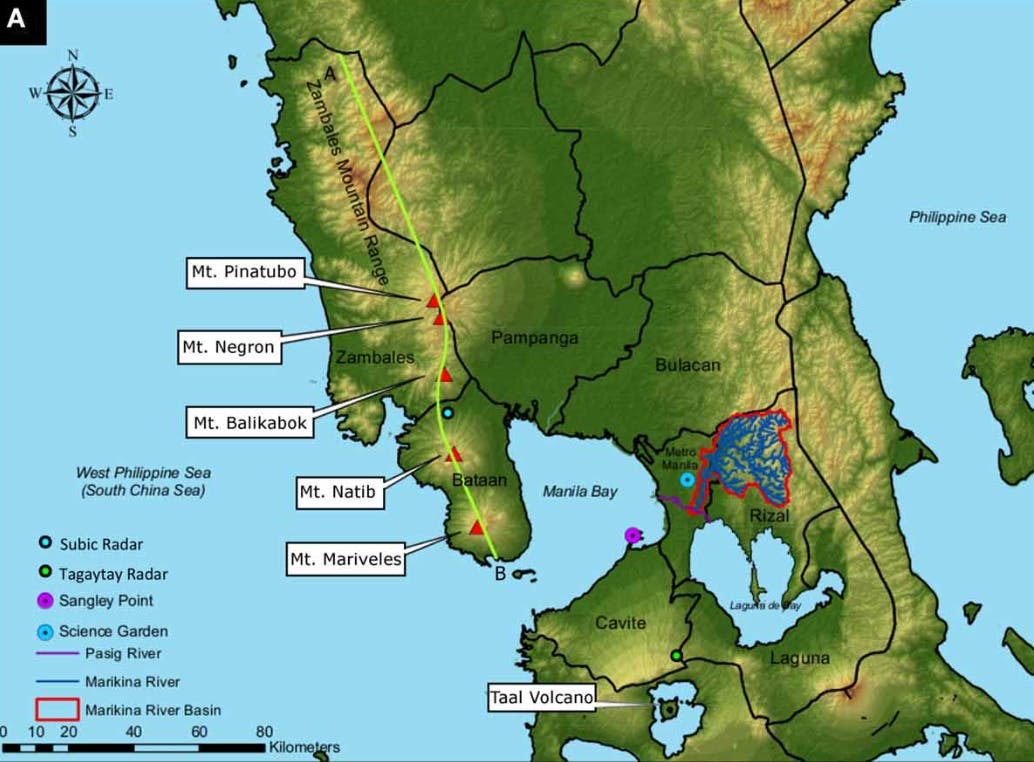The Philippines and South Korea have signed an agreement to conduct a feasibility study to explore the revival of the stalled Bataan Nuclear Power Plant (BNPP), Philippines president Ferdinand Marcos, Jr announced on 7 October.
“In view of the Republic of Korea’s successful experience in the nuclear industry, we have signed the memorandum of understanding on the feasibility study of Bataan Nuclear Power Plant,” Marcos, Jr said in a statement. “They will carry out a thorough feasibility study to continue progress on the BNPP rehabilitation, which we envision to contribute to energy security in the country.”
Marcos, Jr met wtth South Korean president Yoon Suk Yeol to ink the deal, which drew flak from environmentalists, who cited safety concerns and high construction costs associated with the BNPP as major reasons behind its shutdown 40 years ago. The facility was built during the term of Marcos, Jr’s father, the late dictator Ferdinand Marcos. It was the Philippines’ only attempt at building a nuclear power plant.
The same factors continue to make its planned revival and expansion “highly problematic”, said Derek Cabe, coordinator of the Nuclear and Coal-Free Bataan Movement, a network of organisations that raise community resistance against the looming threat posed by coal and nuclear power in the Bataan province, about 90 kilometers west of Metro Manila.
“It is saddening that while other nations are ramping up renewable energy development to address their energy problems, the Philippines government is doing the opposite. We are tying down our energy needs to expensive and dangerous energy generation schemes like coal that we import, and now, nuclear energy which we will likewise source abroad,” Cabe said in a statement.

Philippine president Ferdinand Marcos, Jr. and South Korea’s president Yoon Suk Yeol witness the signing of a memorandum of understanding on cooperation in the field of energy between the Philippine Department of Energy (DOE) and Korea Hydro & Nuclear Power Co., Ltd. (KHNP) at the Malacañan Palace. Image: Presidential Communications Office
The decades-old power plant, priced at US$1.9 billion, never went into operation after it was constructed in 1976 in response to an energy crisis. It was completed eight years later, but the government suspended it soon after, following Marcos’ ousting and the deadly Chernobyl nuclear disaster in Ukraine.
The department of energy announced in 2022 that it would cost US$2.3 billion to refurbish and start-up the facility, besides the annual cost of close to US$900,000 that taxpayers pay to maintain it. Instead of producing electricity, the facility serves as a destination for tourists and students as part of the state-owned National Power Corporation’s efforts to educate the public about nuclear power.

Tourists and students gather to take a closer look at a nuclear reactor during an exploratory tour on 11 June 2011 at the Bataan Nuclear Power Plant. Image: Veejay Villafranca/ Greenpeace
Costs for dismantling and decommissioning the BNPP, which could run into billions of dollars, must also be considered as the amount will be borne by the government and taxpayers, added Khevin Yu, Greenpeace Philippines campaigner.
“Filipino lives are being put in harm’s way for the sake of generating electricity from nuclear energy. At the same time, the costs of damages from a nuclear accident, as well as costs for the disposal of nuclear waste, will not be shouldered by the private company but by the government and current and future generations of Filipinos,” said Yu.
The plant also sits on the coast 18 metres above sea level and near several volcanoes in a part of the Philippines regularly shaken by earthquakes. Mount Pinatubo, a volcano 57 kilometres north of the plant that was thought to be dormant, exploded in 1991, killing 300 people. Seismologists from the University of the Philippines said in a study that the Natib and Mariveles volcanoes nearby are “potentially active”.

Several volcanoes like Mount Natib, Marivieles and Pinatubo surround the Bataan Nuclear Power Plant in the province of Bataan, west of Metro Manila. Image: National Institute of Geological Sciences, University of the Philippines
The feasibility study, which is set to begin in January next year, will be led by Korea Hydro & Nuclear Power Co., Ltd.(KHNP), Korea’s largest power generation company, which is also involved in developing nuclear energy projects in the United Arab Emirates and Czechia.
The memorandum of understanding also includes exploring other nuclear technologies, with all costs associated with the feasibility study to be borne by KHNP. The Philippines government is under no legal obligation to proceed with the BNPP’s rehabilitation depending on the study’s findings, according to the department of energy.
But Cabe said it will “not be surprising” if the result of the feasibility study will conclude that the BNPP is too old to rehabilitate and other viable sites must be developed.
The government has been considering 13 potential sites for small modular reactors (SMRs), including Morong, Bataan and San Juan, Batangas, which may be installed in locations not suitable for larger nuclear power plants and have a lower emissions footprint than traditional facilities.
It is part of the nuclear energy roadmap the government unveiled last month, which aims to run commercial nuclear power plants in the country by 2032.
Nuclear is safe: Filipino nuclear engineer
Amid the security concerns surrounding the BNPP, nuclear power is safe as long as it follows international standards, said Ronald Daryll Gatchalian, science research specialist at the Philippine Nuclear Research Institute.
“Compliance with international standards assures a level of safety that poses an acceptable risk relative to other power generating technologies. Nuclear plants can be operated in the Philippines as safely as they are in other countries since the standards and technology are already available,” Gatchalian told Eco-Business.

Ronald Daryll Gatchalian is a science research specialist at the Philippine Nuclear Research Institute and one of the only known nuclear engineers in the country. Image: Justin Elizalde/ Texas A&M Engineering
Such quality levels include the proper production, transport and use of radioactive material, and the management of radioactive waste based on the International Atomic Energy’s standards, along with providing for the licensing of production and utilisation of nuclear facilities under the United States Nuclear Regulatory Commission.
Part of the nuclear licensing process is site evaluation where detailed site characteristics covering geography, demography, meteorology, hydrology, geology, and seismology are studied before the area is approved.
The Philippine Nuclear Research Institute has existing regulations for nuclear installations which may be reviewed against current international operating experience and best practices, he added.
Gatchalian, who is currently one of the only known nuclear engineers in the Philippines, said that nuclear energy complements renewable power sources such as wind and solar, which are intermittent in nature.
Without nuclear energy, baseload power will be dominated by carbon fuels, which will not lower carbon emissions, he argued.
“Conclusions can only be drawn after such studies …[meanwhile] I consider this narrative infighting among low-carbon technologies which doesn’t help in furthering our climate goals,” he said.










